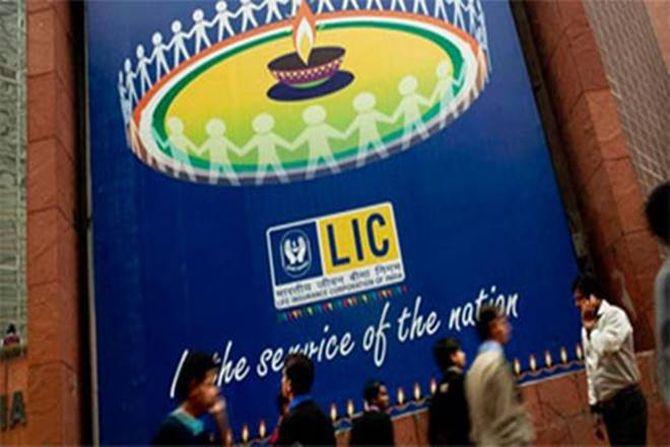Amendment to the Act, sovereign guarantees, investment portfolio, realty holdings, and governance issues to shape valuation.

The road to the bourses for India’s largest insurance company - Life Insurance Corporation (LIC) of India - is not going to be an easy one.
The government’s decision to list LIC via an initial public offering (IPO) is beset with issues that the government, LIC management, as well as regulators of capital market and insurance, will have to overcome for smooth sailing of the issue.
The most important question is whether the sovereign guarantee on LIC’s liabilities will continue.
If the government continues with the sovereign guarantee, there would be questions on LIC’s governance.
However, if the government decides to discontinue the sovereign guarantee, retail investors will have issues with the quality of assets LIC is sitting on.
A good part of LIC’s assets is in government securities, which include state government papers and central government papers.
“One doesn’t know how much of LIC’s portfolio is in state government papers.
"Also, it has a lot of equity stake and exposure in default rated corporate debt papers,” said Ashvin Parekh, managing partner, Ashvin Parekh Advisory Services.
The first step entails changes to the LIC Act.
Nilesh Sathe, former member (Life), Insurance Regulatory and Development Authority of India (Irdai), says, “The first step is amendment to the LIC Act and what’s most important is capital.
"Right now, the capital is Rs 100 crore, which will have to be increased.
"There is a sovereign guarantee that has been provided in the Act, which will have to be changed.
"Once the Act is amended, it will have to be formed as a company; right now, it is a corporation. It will be governed by the Companies Act.”
After amendment and listing, LIC will come under rigorous scrutiny and supervision of Irdai, wherein it will have to strictly maintain the solvency margin of 150 per cent.
Experts say the government may decide on whether to keep the sovereign guarantee for existing shareholders and doing away with the guarantee for new shareholders.
Apart from the legislative work and process to make it ready for the capital market, the most crucial work will be to prepare its employees for the listing and the subsequent changes in expectations.
While LIC does have quarterly discipline (like performance review), it is different from what markets would look for.
“Once you are listed, you can’t make an open statement. In the public sector, everybody is free to talk,” said a former LIC chairman.
Investment bankers believe pricing the IPO could be a big challenge.
Analysts are pegging the issue size between Rs 70,000 crore and Rs 90,000 crore.
Market players fear the IPO could crowd out the secondary market as some investors would have to liquidate their existing holdings to invest in the mega IPO.
The biggest IPO to hit the Indian market is that of Coal India, which had mopped up Rs 15,000 crore a decade ago.
Analysts believe LIC can be valued at Rs 8-10 trillion.
Market experts say, at the time of filing, LIC will have to ensure its house is in order.
Markets regulator Securities and Exchange Board of India (Sebi) follows a disclosure-based regime for IPOs.
This entails disclosing all risks, assets, and investments to potential investors.
Sandeep Ghosh, financial services advisory leader, EY, said, “LIC’s IPO will mean there will have to be recalibration on governance, transparency, disclosure norms, especially with respect to its investment portfolio.”
Experts also said that the company might find it challenging to meet governance norms, which includes having 50 per cent independent directors on its board and separating the chairman and managing director positions in future.
“From the board management standpoint, once LIC becomes a listed entity, it will not only have to keep in mind the interests of policyholders and the government, but also of minority shareholders,” said Ghosh.
To add to that, LIC holds more than 10 per cent stake in certain companies in the capacity of an institutional shareholder, breaching the 10-per cent cap laid down by Irdai and Sebi.
After LIC becomes a listed company, it will be more accountable to shareholders.
This could mean it will no longer be able to play the white knight to the government.
In the past, LIC had bailed out several share sales of public sector firms due to lack of organic demand from investors.
Also, it was nudged to buy the beleaguered IDBI Bank and act as a promoter.
Ghosh adds that to comply with listing norms, it will have to go for further dilution beyond the initial proposed 10 per cent.
“Eventually the government shareholding will have to come down to 75 per cent,” he said.
LIC had a market share of 70.52 per cent in terms of premiums underwritten by life insurers in April-December 2019.
It had underwritten premiums to the tune of Rs 1.37 trillion in the same period.
Photograph: PTI Photo












 © 2025
© 2025